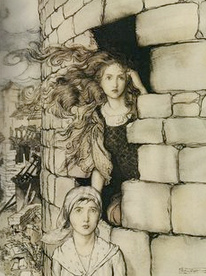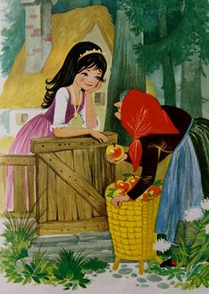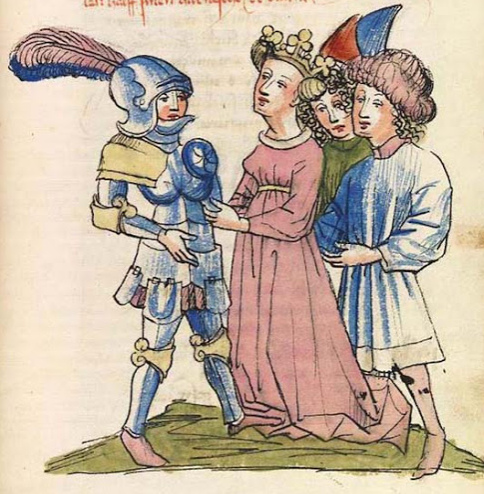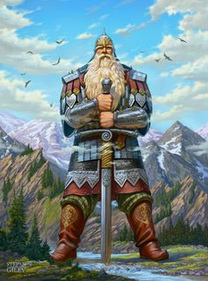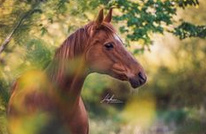| Enjoy these stories - for life. |


D - ESP
<< >>
Breasts+tits 05: Breast symbolism and the symbolism of breast milk in real and in fairy tales (dreams)
Mother's milk as a symbol of physical, mental and spiritual nourishment - censored and uncensored fairy tales (dreams)


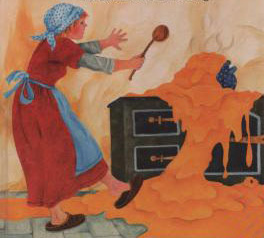
Mother's milk from xxxnikki.com [1] - Little brother and sister, the little brother has turned into a deer [9] - Fairy tale: The sweet porridge: If you forget to switch off the potty, everything swells with porridge full [17] - fairy tale: Romulus and Remus are suckled by a wolf's mother [24]
by Michael Palomino (2006 / 2018)
| Share: |
Facebook |
|
Twitter
|

from: Ingrid Olbricht: The breast. Organ and symbol of feminine identity (original German: Die Brust. Organ und Symbol weiblicher Identität); Edition Kreuz 1985, Edition Rohwolt (rororo) 1989 [a1,a2]
Breast symbolism in censored fairy tales
The symbol of breast milk and its meaning
Mother's milk from xxxnikki.com [1]
Breast milk is a symbol of fertility (p.151) and symbolizes food in every form: physical (p.151-152), mental and spiritual food. As food for soul and spiritual food, mother's milk also symbolizes basic wisdom and immortality, for example as wisdom "Sophia", or as "Alma Mater" (p.152).
[Breastfeeding has its limits when the children get teeth and bite into the nipples of the mother's breast].
In ancient cultures, the milk breasts were particularly appreciated. In Egypt and in Greek-Roman cultures, female mummies were buried with gilded breast amulets on the ribs where the breasts had been (p.152).
White milk was generally related to the white moon and femininity (p.152).
Also "Mother Mary" of "Christianity" is depicted with milk-giving breasts, as "Mary lactans" (p.152).
After all, milk is generally regarded as the best tonic and beauty product (p.152), but at the same time also in a negative sense as a symbol of eternal childhood in formulations such as "milky boy" or "milky face" etc.. (S.153).
The symbol of the breast and its meaning as a vessel in a fairy tale


Nasca culture vessel with lizard design, Museum of Ica [2] - pot of Nasca culture with a design of a bird god [3] - A goblet is also a symbol of mother's breast [4].
The breasts connect the mother to the baby and to the sexual partner. In this way, the breasts are symbolizing a bridge or a symbiosis. Breasts giving milk are symbolized as containers that give food and fertility (p.151).
Breasts are always the meeting place and hiding place for children, breasts are the guardian of life (p.151). In dreams or fairy tales, the nourishing milk breast or mother is symbolized, for example, by a pot that fills itself (Fairy tale of the sweet porridge of the Brothers Grimm) (p.166), or by a chalice that is always filled with wine (Fairy tale: The page and the silver chalice (p.168), or through the "water of life in a bowl", which heals and gives life (fairy tale "Peronnik the Fool" (p.169).
The breast "is a vessel that does not dry up - at least not as long as the natural attitude applies - and this vessel contains everything that every living being needs for nutrition, growth and transformation." The breasts do not need any special feeding for giving this energy, but they are simply there (p.166).
At the same time the overemphasis of the relationship to fellow human beings by the breast can represent an abuse, up to the destruction of life by refusal to eat, by mental suffocation, by an overabundance and by poison in the food. Then the breast becomes a "stone breast" (p.151).
Symbolic milk in religions - Milk sacrifice
Milk in milk glass bottles [5]
Milk is the highest divine promise for the "land where milk and honey flows" (p.152).
Milk is sacrificed to certain gods so that they are awakened every day. For example, around the tomb of Osiris 365 sacrificial bowls of milk are placed (p.152).
Or, milk is sacrificed to the god of thunder because ancient traditions believe that mother's milk can put out the heavenly fire. Olbricht:
"In some traditions, milk is linked to heavenly fire. In Central Africa, as in old Europe, it was believed that only milk could extinguish the fires caused by lightning. Therefore, to the deities of thunder drinking bowls of milk were offered." (Olbricht, p.152)
Mother's milk as symbolic magic milk
Wise women with breasts: Let milk splash out of the breast as a defence
In native cultures of today, to have breasts means still to have "power". When the natives of the Eipo in New Guinea feel threatened, breastfeeding women squeeze milk out of their breasts, as a kind of counter magic against evil spirits (p.135).
Old statues show the same procedure with the Maori natives (p.135).
Maori woman, native from New Zealand [6]
Likewise, the lactating Indio women acted against the Spanish invaders in Central and South "America":
"To the Spaniards, who conquered the South American continent in the age of discovery, the natives sent them women to present their breasts to the attackers splashing milk to them to fend them off." (S.135)
However, consumer awareness has lost its fear of the magic of breasts (p.135).
[Tales are dreams that have been told again. The uncensored fairy tales must be interpreted according to dream criteria. With censored fairy tales the interpretation of the essential message is partly no longer possible].
Fairy tales with amputations of breasts (mastectomies)
Fairy tales: The girl without hands (Grimm) with mastectomy as compensation action for incest
Girl without hands [7]
There is a censored version:
The devil promises wealth to a poor miller when he leaves to the devil what is behind the mill. It is the miller's only daughter. Finally, the miller chops off the daughter's hands (p.154).
The uncensored version tells the following:
The miller finds his daughter so sexy that he sexually desires her. She steadfastly refuses the Father's desires. As a punishment, the daughter's father cuts off her hands and her breasts and chases her away. According to Olbricht, the breasts are sacrificed to evade any incest action (p.154).
[Another interpretation: If the father is not allowed to "enjoy" his daughter's breasts, thus no other man should "enjoy" his daughter's breasts and therefore he is eliminating these beautiful breasts. Additionally, the father has a big relationship problem and seems to know too few women].
Interpretation: [The censorship of fairy tales is essential]. The censored fairy tale is supplemented and falsified with "Christian" terrorist symbols in order to spread the "Christian" terrorist elements devil and sin (p.154).
Fairy tale: "Maid Maleen" (Grimm) with mastectomy in the tower as emergency food ration
There is a censored version:
Maleen, the king's daughter, insists on marrying a certain prince. The father does not want to allow this marriage and is punishing his daughter Maleen for her firm will with seven years of imprisonment in a walled tower, together with a chambermaid (p.154-155). Food and drink are organized for them for 7 years (p.155). After seven years Maleen of waiting, Maleen expects that her father will take her from the tower. But nothing happens. Then the women caon free themselves removing stones from the wall. They see that the father's kingdom is devastated and the land is burned (p.155).
Maleen and her chambermaid breaking through the tower [8]
The uncensored version tells the following:
Maleen, the king's daughter, insists on marrying a certain prince. The father does not want to allow this marriage and is punishing his daughter Maleen for her firm will with seven years of imprisonment in a walled tower. After seven years Maleen of waiting, Maleen expects that her father will take her from the tower. The two women are starving because food has run out. As emergency food in the tower the maid / chambermaid cuts off her breasts to save the king's daughter from starvation. The breasts become direct food now (p.155).
[Interpretation: Censorship has censored away the symbol of mother's food. The evil father symbolizes the destructive, untamed male element in the king's daughter, which she has not yet mastered. The prince symbolizes the union with a man to a paradisiacal, balanced state. However, the king's daughter cannot yet reach this state. The tower is a big penis. Maleen, the king's daughter, is so emotionally caught up in her sexuality that she can be locked up in it for 7 years and this is no harm for her. The escape from the tower is the liberation of obsessions in their sexuality pursued with male energy. The father cannot free the daughter because the destructive, unrestrained male energy is no longer present in the daughter. The chambermaid's willingness to help goes to the extreme. The mastectomy of the chambermaid symbolizes the mother's willingness to help the king's daughter, not a real mastectomy].
Fairy tale: "Brother and Sister" (Grimm) with mastectomy for the father
Censored version:
Two children leave the evil stepmother and go out into the wide world. The stepmother is bewitching forests and fountains. The little brother becomes a deer. Then they live in a house in the forest until a king's hunter discovers them. They are saved by the king (p.155).
Brother and sister, the brother is converted into a deer [9]
Uncensored version:
The stepmother cooks the father regularly meat. One time the meat is stolen, may by the children have stolen it or the hungry cat. Then the stepmother cooks her breasts and the father thinks that these cooked breasts are delicious to eat and wants more human flesh. Therefore the children are in danger now. They flee to the wide world (p.155).
[Interpretation: Censorship is essential. The stepmother is so devoted to the father of the children that she sacrifices her breast to satisfy him. She gives him all her motherly energy. The stepmother goes so far as to be ready to sacrifice her stepchildren to satisfy the father. So the stepchildren should subordinate all their energy to their father. At the same time it seems that the father does not matter the physical condition of his family. This provokes the escape of the stepchildren. Such conditions also occur in intact families where there is no self-reflection].
Fairy tales with positive mother's food for the daughter
Fairy tales: The little earth cow (Grimm - German: Erdkühlein): from the tail, horn and hoof an apple tree is growing
Al little earth cow is accepting a hungry human girl [10]
A girl gets nothing more to eat from the stepmother and goes into the forest. The third time the girl is distributing hemp seeds to mark the way back, but does not find it anymore, instead she finds a house of a little earth cow, the original mother in animal form. There the child is admitted until the sister looks for the girl. The sisters find each other, the little earth cow is betrayed and is slaughtered by the stepmother. The girl keeps from the little earth cow worthless parts as a tail, a horn and a hoof and buries them (p.158). Within three days an apple tree (p.158-159) with apples is growing, and these apples can heal (p.159).
Interpretation:
The apples symbolize breasts, motherly love, motherly energy, healing food, are a symbol of eternal femininity [a spiritual food that the stepmother apparently does not have]. (S.159).
[Stepmothers who treat stepchildren badly are only fixated on men. The stepchildren are blocking "their way"].
Fairy tales: The page and the silver chalice (GB fairy tale): Every elf gets the wine of her taste
Chalice of silver, England [11]
A little page sneaks into the Elven Hill (p.168-169) and sees that there is a goblet there, which is always filled with wine by itself. The chalice produces the wine even adapted to the desires of the drinking person. Everyone gets the wine they like best. The page is robbing the chalice (p.169).
Fairy tales: The three sisters One-Eye, Two-Eyes, Three-Eyes (Grimm): From the bowels of a goat is growing an apple tree
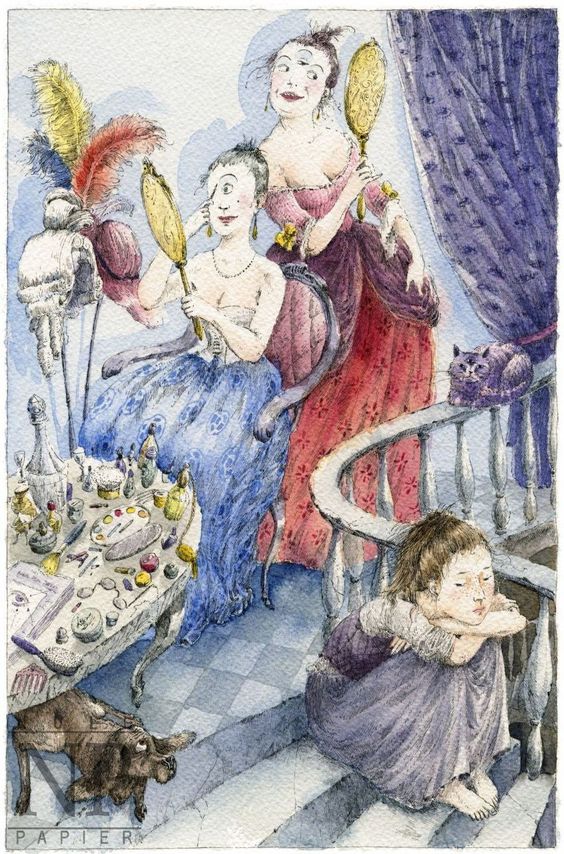
One-Eye, Two-Eyes, Three-Eyes [12] - Two-Eyes in the apple tree with golden apples [13]
Two-Eyes is despised by the other sisters because with two eyes she looks like humans. Two-Eyes is rejected and expulsed by the mother and is going to live with the goat (which is a mother symbol for the "good mother"), where Two-Eyes gets better food than at home. When Two-Eyes returns home and leaves the food, the family becomes suspicious. The sisters are pursuing Two-Eyes and they detect the goat. Then the mother of the sisters kills the goat. From the buried bowels an apple tree is growing with golden apples which only Two-Eyes can reach (p.159).
Interpretation:
The apples symbolize the imperishable, golden femininity, [a spiritual-feminine food that seems to be completely absent in the family]. (S.159).
Fairy tale with strengthening mother's food for the son
Fairy tales: Strong John (Scandinavian fairy tale): Criterion: Tearing out a tree
Strong John [14]
A boy is breastfed by his mother for 10 years. When the father tests the strength of the son and lets him pull out a strong tree, the son still does not succeed. The father orders the boy to drink another 10 years from the mother's breast. At the age of 20, the son easily manages to pull down the tree. He is passing adventures without accidents and in the end he has a princess to wife (p.160).
[Interpretation:
The problem of priority between mother and girlfriend is not mentioned. Perhaps the "strong John" noticed the problem by himself and created a balance of mental forces by further education. Then John would also be really "strong" mentally].
Fairy tale with strengthening mother's food for the father
Fairy tale: The daughter is giving food to her father in prison (Rome)
Tits are not only for the baby [15]
A prisoner shall starve to death in the dungeon. But the guards are wondering why he's not starving to death. Every day, the daughter comes for a visit. She has just given birth to a child. She is breastfeeding her father with her breasts which the guards are not noticing (p.174).
This representation with feeding breasts occurs frequently in ancient Rome (p.174)
Fairy tales with harmful mother's food against the daughter
Fairy tale: Snow White (Grimm): Poisoned mother's nutrition and rivalry between mother and daughter
Snow White [16]
Stepmother wants to kill Snow White for her beauty. Finally, a poisoned apple is said to kill Snow White. First Snow White is dead, but then the mother by fury (p.156).
Interpretation: The condition expresses an everyday mother-daughter rivalry. The apple is a symbol of fertility, love and warmth of the mother's breast. The sick energy of the mother's mother's breast kills Snow White. The tension between mother and daughter killed Snow White, but then the mother. In such a situation in reality, for example, breast cancer would be possible (p.156).
[Tensions in life for years can provoke limited food ingestion, bad food ingestion, limited moving in life, limited oxygen supply, etc., thus the function of organs and glands is limited provoking a sour body with a low pH value. Cancer heals with sodium bicarbonate, blood group nutrition, noni, or bitter apricot kernels etc. - see the note about cancer healing].
Fairy tales with positive nutrition for the child with a negative aspect: the balance between motherliness and aggression is wanted
Fairy tale: Sweet Porridge (Grimm): the potty can continue cooking and suffocate everything - find the balance
Fairy tale: The sweet porridge: Forgetting switching off the potty, everything swells with porridge full [17]
A mother can no longer provide food. Then the girl herself goes into the forest, where an old woman gives the girl a potty, which produces sweet millet porridge when a simple saying is said. If one forgets to say the saying for turning off the potty, however, the potty produces so much porridge that everything is flooded and suffocated (p.156).
Interpretation:
The potty symbolizes the breasts that give milk, the porridge symbolizes the breast milk. Too much breast milk (as a symbol of maternal warmth) suffocates the child (p.156).
In real life, overfed children become too fat, are exposed to teasing and isolation and can hardly build up independent relationships, so that they seek comfort from their mothers for a long time and the connection to the mother is hardly split. The formula to stop food intake is just as important as the formula to produce porridge (p.157).
Fairy tale: Peronnik the Fool (F, NL and CH): The water of life in the golden basin and the learning to master the aggressive lance - finding the balance
Tale: Peronnik has to find the balance between basin (woman's element) and lance (man's element) [18]
The magician Rogear is ruling in his Castle Kerglas over a golden basin and a diamant lance. This basin is producing a healing life water. When it's drunken it's healing all illnesses and can also resurrect people from death. The lance has the opposite characteristics: when the lance is touched in an aggressive way this lance is killing this person. Many knights are killed in this way when they try to rob the basin and the lance. Perronnik is succeeding in surviving all dangers. He can rob the golden basin and the lance together (p.169).
Interpretation:
The life-giving basin symbolizes the donating mother's breast, the water of life is the symbol for the mother's milk, which gives all food. The lance symbolizes the aggressive male element. The life-giving principle is next to the life-destroying principle. The fairy tale is a simplified Grail story (p.169).
[One has to look for the balance between life-supporting and life-destroying elements, between "Anima" and "Animus", between the healing force and the strong action force of decisiveness. Fairy tales are recounted dreams. The person who dreamt this story will find the balance].
Fairy tale: Parzival (legend of the "nobles"): The not so educated mother's boy must find the mental balance
Fairy tales with man's milk for the son
Fairy tale: Parzival must find the balance between masculinity and femininity [19]
The mother of Parzival is in love with her son and he becomes a "mother's boy". When Parzival moves out of home, the mother sinks to the ground as if dead, because the son had been her whole content of life in a pathological manner (p.171). Parzival goes to a teacher who orders him no longer to refer to the mother, and at the same time he should not ask too many questions (p.171-172).
Censorship against putting questions is very hostile to life, because Parzival has almost no opportunity at all to find its own centre. And then he looks for his mother, but no longer finds her, but finds many other women. Finally, a fisherman shows him the way to the Grail Castle with the Grail, a vessel with miraculous contents (p.172) symbolising the superpersonal, general feminine-motherly element of life, and a lance (p.173).
Parzival is invited by the lord of the castle to a dinner at which a woman presents the Grail in a procession (p.173): first a lance, then the Grail (the vessel), then a silver plate. Parzival is not mature enough to receive the Grail. The next day Parzival finds the castle empty (p.174).
Parzival travels even further, meets various women, learns that his possessive mother is dying, and only now he can deal with femininity in a balance that does not destroy him and femininity. Parzival becomes a healer for the king in the castle and brings the the dry and dead land of the king to bloom again by making the water flow again (p.175).
Interpretation:
"The Grail is the symbol of wholeness and a symbol of femininity, but also a symbol of paradise. It contains all aspects of the woman, physical and spiritual; it embodies the vessel of the body and the spiritual element of life as development and unfolding. He releases from the one-sidedness of both extremes, he connects two poles and leads to the self, away from symbiosis and isolation, he makes whole. The search for the Grail is the search for the Self." (S.175)
[The Grail (the bowl with the wondrous content) and the lance represent the female and male elements between which the balance for life can be found, corresponding to "Anima" and "Animus"].
Fairy tale with emotionally poisoned mother's food for too strong a mother's bond
Fairy tales: Hansel and Gretel (Grimm): The possessive witch likes the Hansel so much that it would be good "for eating"
Tale: Hansel y Gretel [20]
The mother can't feed the children. Hansel and Gretel in the forest can no longer find their way home after spreading pieces of bread and meet a gingerbread house where a woman lets them live. But the woman becomes a witch, because she locks Hansel in a cage and fattens him with the intention of frying him. Gretel - when there is an opportunity - throws the witch herself into the fire and saves Hansel (p.157).
Interpretation:
The witch likes children "to eat". All the food that the witch gives to the children is given with the intention of owning the children (p.157).
[For the witch, this Hansel is a man's replacement, that's why HE's in a cage and not Gretel. The Hansel is in mental prison, not Gretel. All in all, the witch wants to have both children at once and does not allow the children to develop emotionally until they defend themselves. The detachment from the witch happens however only with the murder of the witch, because the witch herself is not capable to learn anything. On the contrary: the witch tightens her measures to "preserve" her possessions of the children with every resistance. That's why the witch must be destroyed.
In reality, the situation of a son who has to play the male substitute for his mother occurs relatively often. If the mother has no psychological idea, she can make personality development absolutely impossible for the son. If the son notices the situation early enough, he can perform the split in his youth alreadyh. When the performance of the split comes too late, the son will always have the feeling of having missed his youth. If the son doesn't notice the manipulation at all, then he remains a mother's boy for all his life. He worships the mother more than the girlfriend, so that the girlfriend soon has no desire any more for him. After several breaks because of the wrong priorities, the son should then notice what is going wrong].
Fairy tale: The strong young man (fairy tale from France from Provence): The too strong connection with the mother
Breastfeeding with over 3 [21]
A mother is nursing her son. After two years, the boy cannot be removed from the breast and weaning is not successful (p.159-160). After four years of breastfeeding, the son thinks he wants to be breastfed until 20 and he will then protect the mother. At the age of 20 he then performs heroic deeds, defeats the devil and returns to his mother richly endowed by the king and gives her everything what he has earned (p.160).
Interpretation:
The son still does not want to break away from his mother (p.160).
[When the son worships the mother more than the girlfriend, the girlfriend will protest...]
Fairy tale: The young giant (Grimm): The milk of the giant produces a bully boy
Fairy tales: A giant suckles a baby, and a son without a brain comes out of it [22]
A male baby is given to a giant and this giant is breastfeeding this baby with his breast milk. The boy becomes a giant, but without intelligence. When the boy is with his biological parents, he provokes fear, and the parents do not recognize him at first and then want to have him away because he eats too much (p.160-161).
Interpretation:
The giant practically adopted and captured the boy. And the giant did not train the boy mentally and spiritually at all (p.161).
Fairy tales with animal milk for the children
Fairy tale: The baby of the mare (gypsy fairy tale): Two years of mare's milk for the boy
Tale: a mare giving mother's milk to a human baby [23]
A priest rides is riding a mare (female horse) which becomes pregnant by him. Now the mare is giving birth to a son who gets mare's milk for one year. Then this son does not pass a test of strenght so the mare allows him a second year to drink the mare's milk. Only after two years this son is strong enough for ending suckling (p.161).
[Interpretation:
It seems that this criminal pedophile priest is not part of the original tale but is "composed" into the tale as a "Christian" element].
Fairy tale: Romulus and Remus: The wolf suckling their two sons (Rome)
Tale: Romulus and Remus are suckled by a she-wolf [24]
A priestess of the Vesta natives in Italy, Rhea Silvia, gives birth to twins and must to go to prison for this, to the dungeon. The two boys are set abandoned in the Tiber River, are saved and pulled out of the river by a wolf mother until a shepherd finds and admits them. At the place where they were rescued, the twins are said to have founded the city of Rome (p.161).
[Interpretation:
It is probable that the priestess and the dungeon do not belong to the fairy tale, but are "composed into the tale" as "Christian" elements. Criminal church with it's actions condemning pregnancies and leaving children alone is indeed so brutal].
Fairy tales with breast milk as a beauty product
Fairy tale: Tropsen (Gypsy fairy tale): The bath in the horse's milk
Tale: mare with foal [25]
The youngest of four brothers does not choose a horse for his annual salary like the others, but a foal that still drinks with the horse's mother. The foal is growing up and is more beautiful and agile than any other horse. The man has many adventures with the horse. Finally, he should bathe in a kettle with boiling mare's milk. The horse helps him and blows with his nostrils against the milk, so that the temperature of the milk is decreasing and is only warm at the end, so that the rider can bathe in the milk without problems. He becomes more beautiful than before (p.162).
Fairy tale: The Enchanted Duck (fairy tale from Poland, Hungary and Slovakia): A milk lake provokes a positive transformation
Tale: a duck in a lake [26]
A duck floats in a milk lake. When it jumps out, it becomes the fairy "Ilona" (p.163).
Breast milk as a remedy: eye drops
Breast milk can be used as eye drops in inflamed eyes (p.189).
<< >>





